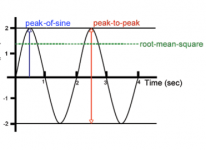All impressive but useless for everyday application
Sent from my iPhone using Tapatalk
You know of course that if horsepower still came from horses, the plant would have a big opening in the sidewall to bring the hay bales in. You could be grateful everytime you have to carry wire in the door instead of the hay bales. The difference between the two is just an accident in history as to which era you were born into.
I bid a job and wired it per plans and specs, town money town golf course irrigation pumps. The 10 stage 20 hp Goulds pump was on a spec control panel that went to zero flow and held the pump on for three minutes more, shutdown timer, into the closed PRV, the pressure reducing valve.
Let me tell you, that was impressive. That motor would just spin anything connected to it as soon as the 480 was put to it, even the dead headed 10 stage pump pulling pond water and trying to throw it somewhere, even into the closed PRV.
Don't feel bad. I saw the 3 minute timer in the control diagram and tried to get the specialist golf course design engineer to change it, with no useful result. He drove down from out of state to charge them $1000 for the day extra, to tell them to tell me it would work. He was right, it did work. But the PRV needed a rebuild after a few months, the front end was pushed in. Don't know how long the pump lasted but Goulds told me they were pulling the warranty off it when I asked them what would happen to it.
The question on the exam, if they were all like that you would be right that they wanted no one to pass except for the headmaster's nephew and the few others they had sold the answers to in advance. If it's only one or two like that, the question is there to split the 95 percentile guys from the 97 percentile guys.
It would have been solvable algebraically. 1 cycle / second is 1 Hz. 60 cycles / second or 60 Hz is:
60 (cycles) Hz = 1 second
1 (cycle) Hz = 1 / 60 seconds or .0166 seconds
Lots of times you want to know how fast 1/4 cycle is. You want the breaker or fuse to open before peak current. How fast is 1/4 cycle at 60 HZ ?
1/4 (cycle) Hz = (1 / 60) / 4 seconds or .00416 seconds, convert that to milliseconds is 4.16 milliseconds.
That's about 1st year HS algebra along with some dimensional analysis. Also, the question is there to see if you get frustrated by it (then need a cigarette), or if your adrenaline is up and you're not going to let a question like that kick your butt. lf you find learing something exciting, or if you like constantly rebuilding the same PRV.
Also, the teacher's need someone to carry the hay bales for them, so I'm sure they get some of the blame also.

